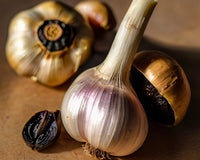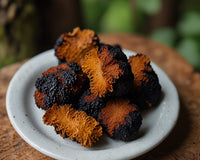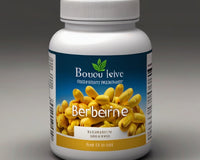introduce
Respiratory muscles are also called "respiratory pump muscles" and they form a complex arrangement in the form of semi-rigid bellows around the lungs.
All muscles attached to the human chest have the inherent potential to cause breathing action.
- The muscles that help expand the chest are called inspiratory muscles because they help in breathing in.
- The muscles that compress the chest are called expiratory muscles, and they induce exhalation.
These muscles have the exact same basic structure as all other skeletal muscles, and they work together to expand or compress the chest cavity.
The characteristic of these muscles is that they are composed of fatigue resistant muscle fibers, which are controlled by voluntary and involuntary mechanisms (if we want to breathe, we can, the body does it automatically even if we don't think about breathing)
primary muscles
The main inspiratory muscles are the diaphragm and external intercostals.
Relaxed normal exhalation is a passive process that occurs due to the elastic recoil and surface tension of the lungs. However, there are some muscles that contribute to forced exhalation, including the internal intercostal muscles, intercostalis intimi, subcostals, and abdominal muscles.
The muscles of inhalation raise the ribs and sternum, and the muscles of exhalation depress them. [6] .
accessory muscles
Accessory inspiratory muscles (sternocleidomastoid), the scalenus anterior, middle scalene (medius) and posterior scalene (posterior), pectoralis major and pectoralis minor ( pectoralis major and minor), the inferior fibers of serratus anterior and latissimus dorsi, the serratus posterior superior may aid in inspiration, and the cervical iliocostalis ( iliocostalis cervicis). Technically, any muscle attached to the upper limbs and thorax can serve as an accessory muscle for inhalation through reverse muscle action (muscle work from distal to proximal)
The auxiliary expiratory muscles are the abdominal muscles: rectus abdominis, external oblique, internal oblique and transversus abdominis.
The lowest fibers in the thoracolumbar segment include iliocostalis and longissimus, serratus posterior inferior and quadratus lumborum. Accessory muscles are recruited during exercise due to increased metabolic demands and during periods of respiratory dysfunction [5]
diaphragm
It is a double-domed plate of internal skeletal muscles that separates the thoracic cavity from the abdominal cavity.
- Nerve supply: The motor nerves are supplied by the phrenic nerve (C3 C4 C5), the sensory nerves are supplied by the phrenic nerve to the central tendon, and the lower 6 or 7 intercostal nerves supply the peripheral part.
- Blood supply: The inferior phrenic artery provides the majority of the blood supply, with the remaining supply carried through the superior phrenic, myophrenic, and pericardiophrenic arteries.
- Function: The diaphragm is the primary inspiratory muscle and during inhalation it contracts and moves downward, thereby increasing the vertical diameter of the thorax and producing lung expansion, which in turn draws air in.
intercostal muscles intercostal muscles
They are divided into three types: external intercostal muscles (the most superficial muscles among the intercostal muscles), internal intercostal muscles (internal intercostal muscles), and innermost intercostal muscles (innermost intercostal muscles).
External intercostal musclesExternal intercostal muscles
- Origin: Above and below the lower edge of the ribs
- Insertion point: upper edge of lower ribs
Internal intercostal muscles
- Origin: The costal groove arising from the upper rib (the lower part of the inner surface near the lower edge of the rib)
- Insertion: upper edge of lower rib
Innermost intercostal musclesInnermost intercostal muscles
It is an incomplete layer of muscle that spans multiple intercostal spaces. These muscles contribute to the function of the external and internal intercostal muscles.
- Starting point: From the upper costal groove and
- Insertion point: upper edge of lower ribs
- Nerve supply: All intercostal muscles are supplied by their respective intercostal nerves.
- Blood supply: With the exception of the internal thoracic and myophrenic arteries, all three muscles receive their blood supply from the anterior and posterior intercostal arteries; the costocervical trunk is the innermost and innermost intercostal muscle.
Breathing exercises to increase lung capacity
Diaphragmatic breathing Diaphragmatic breathing
This technique is particularly useful for people with COPD, for whom the diaphragm is not as effective at strengthening. Techniques best used when feeling rested.
If you have COPD, ask your doctor or respiratory therapist to show you how to use this exercise for best results.
According to the COPD Foundation, you should do the following to practice diaphragmatic breathing:
- Relax your shoulders and sit or lie down.
- Place one hand on your belly and one on your chest.
- Breathe in through your nose for two seconds, feeling the air enter your belly and feel your belly move outward. Your stomach should move more than your chest.
- Exhale through puckered lips for two seconds while pressing in your abdomen.
- repeat.
Pursed-lips breathing Pursed-lips breathing
This breathing exercise is often easier than diaphragmatic breathing for beginners, and you can do it at home even if no one teaches you how to do it. It can be practiced at any time.
Practice pursed lip breathing:
- Breathe in slowly through your nostrils.
- Pursing the lips as if pouting or blowing on something.
- Exhale as slowly as possible through pursed lips. This should be at least twice as long as the inhalation.
- repeat.
Tips for keeping your lungs healthy
- Quit smoking and avoid secondhand smoke or environmental irritants.
- Eat foods rich in antioxidants.
- Get vaccinations like the flu shot and pneumonia shot. This helps prevent lung infections and promotes healthy lungs.
- Exercise more frequently, which can help your lungs function properly.
- Improve indoor air quality. Use tools like room air filters to reduce contaminants like artificial fragrances, mold, and dust.
When do breathing exercises work?
Just like aerobic exercise helps improve heart health, breathing exercises can make your lungs function more efficiently.
Pulmonary experts recommend breathing exercises for people with COPD and asthma because they help keep their lungs strong.
A person should perform these exercises when their lungs feel healthy to build strength, and continue when they feel short of breath.
Deep breathing exercises may help increase lung capacity. For example, the British Lung Foundation says deep breathing can help clear mucus from the lungs after pneumonia and allow more air to circulate.
Do this exercise: Take 5-10 deep breaths, then cough hard a few times, then repeat.
Other exercises, such as pursed-lip breathing, can help control breathing difficulties during respiratory illnesses. According to the National Institute for Health and Care Excellence, this may help treat breathing difficulties caused by COVID-19.
However, researchers have not studied the impact of breathing exercise on lung capacity in COVID-19 patients. There is currently no evidence that they are a safe or effective way to control symptoms of this new disease.
Overall, it's a good idea to talk to your doctor before trying any new breathing exercises.
While breathing exercises may be beneficial for people with mild respiratory symptoms, people with severe symptoms may need oxygen therapy or the use of a mechanical ventilator.
Anyone concerned about their respiratory symptoms should consult a health care provider.














